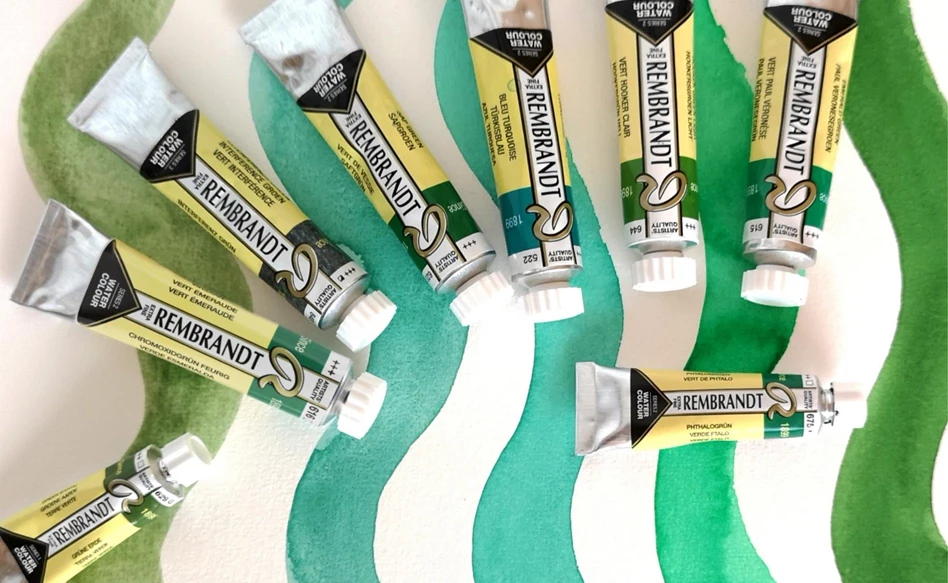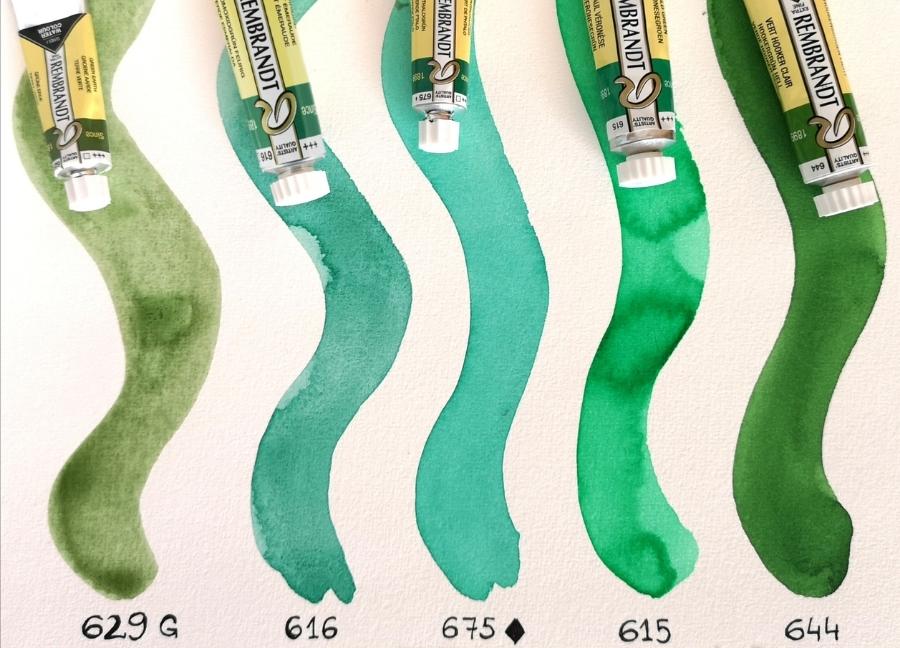
Rembrandt's green tints
Did you know the Rembrandt water colour range contains 16 green colours? At first sight, some of these greens may look pretty similar to each other, but we can assure you there are big differences! All of the greens in the Rembrandt water colour collection have their own unique properties.
Viridian and Phthalo Green
Take Viridian 616 and Phthalo Green 675, for example. At first sight, you might think these are the exact same colour. But when you look at the colour number on the Phthalo Green 675 tube, you can see a small black rhombus next to it. This indicates that the paint has a high staining property, which means that the pigments used in the water colour paint are very fine and will stick to the paper and fill all its pores. With this type of paint, you almost can’t see the structure of the paper anymore and the surface looks very even. The very intense colour can’t be washed away with a wet brush once applied.
Viridian 616, however, gives you a completely different structure and can be used in a technique in which you want to make changes in the first layer by washing the paint away with water. With this paint, you can still clearly see the structure of the paper.

Green Earth
Another interesting colour is Green Earth 629. This is a natural pigment with subtle tinting strength and a granulating property. When you look at the tube, you can see a small capital letter G next to the colour number, which stands for granulation.
But what is granulation? Granulation refers to the characteristic that some paints have in which pigments combine together in small groups. You can clearly see that the pigments cause spots and a different structure on the paper. The painted surface is uneven, which is a great thing when you want to achieve a natural look in your water colour painting. Green Earth 629 is perfect for adding texture to bushes, trees etc.
The granulating property is also very useful in abstract paintings to achieve more variety in your composition. Granulation is best visible when you use lots of water in a wet-on-wet technique, so the pigments have room to roam freely and granulate in different spots.
Other shades
We hope this article has taught you a little bit about the different properties of some of the greens in this collection. Let us know on social media whether you would like us to discuss more greens or other colours that have a range of different shades.
Have a look at the complete assortment of Rembrandt water colours here.




